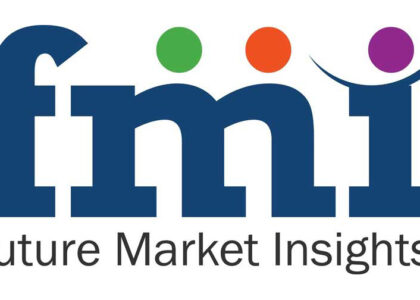The Bamboo Apparel Market is estimated at US$ 2,248.6 Million in 2022 and is projected to reach US$ 4,026.9 Million by 2032, at a CAGR of ~6.0% from 2022 to 2032.
Apparel made of bamboo is entirely natural, silk-soft, and biodegradable. The bamboo clothing is made from bamboo pulp, which is incredibly soft. Bamboo is an excellent fabric for clothing because of its great breathing qualities provided by its hollow fibres. The bamboo fibre has tinier pores and gaps than any other material, allowing for improved ventilation and moisture absorption.
The manufacturers green approach in product processing and manufacturing is paving a way for the market growth. In this approach, the bamboo’s woody components are broken down, and the walls are disintegrated into a mushy mass using natural enzymes.
Unlock helpful information about the Market – Download your Sample Report! https://www.futuremarketinsights.com/reports/sample/rep-gb-15865
After that, mechanical combs are used to separate natural fibres into yarn. Such transparency into the manufacturing processes is generating a loyalty factor amng the consumers towards the manufacturers and increasing the product demand.
However, the procedure is more expensive and labor-intensive, resulting in significantly less production. Bamboo-based textiles are reasonably priced, aesthetically attractive, strong, and cosy. Bamboo fabrics are anticipated to become a favoured textile in the years to come because they are simple to create, maintain, and offer additional health benefits.
Fashion designers are increasingly choosing bamboo textiles. Well-known fashion designers to create their collections, frequently use bamboo materials. A few examples include Sara Kirsner, Linda Loudermilk, Agnes B, Kate O’Connor, Alfred Sung, Oscar de la Renta, Diane von Furstenberg, and Diane von Furstenberg. Eco designers favour the fabric because of its opulent softness, smoothness, and gently flowing drapes that is witnessing a high demand in the current market.
Want to know more about our latest market report? Ask our analyst today! https://www.futuremarketinsights.com/ask-question/rep-gb-15865
Key Takeaways from the Bamboo Apparel Market Study
- Use of blended fabric is highest among different fabrics in bamboo apparel market with a revenue share of around 62.7% in 2021.
- China and India are the biggest manufacturers for the bamboo apparel and biggest importers to the USA.
- Bamboo apparel market is gaining popularity, due to eco-friendly sustainable production which is trending in many countries.
- Environmental conservation awareness rising and boosting market growth.
“Increasing awareness among consumer as well as fashion designers due to the health advantages and benefits, the market for bamboo apparel market is expanding. With proliferation of online platforms, key players are likely to collaborate with e-commerce giants to gain revenue,” Says an FMI Analyst.
Who is winning?
Leading players operating in the bamboo apparel market are China Bambro Textile Co, Ltd., Bamboo Textile Co., Advantage Fibres, Wild Fibres, TIC Gums, China Thrive Industrial Co., Towel Industrial Co. Ltd., Xiamen Ebie import & Export Co. Ltd., Boody Bamboo Clothing, Cozy Earth, Cariloha, Inc., BLUE BUNGALOW, Free Fly Apparel, Ettitude Holdings, Inc., and Thought Clothing among others.
Get More Valuable Insights
Future Market Insights, in its new offering, provides an unbiased analysis of the bamboo apparel market, presenting historical demand data (2017-2021) and forecast statistics for the period from 2022-2032.
The study divulges compelling insights on the bamboo apparel market by type (t-shirts, innerwear’s, bathrobes, towels, socks, others), by fabric type (pure, blends), by consumer orientation (men, women, kids), by distribution channel (hypermarket/supermarket, wholesale dealers, specialty stores, independent stores, online stores, others), across seven major regions.
Read Related Reports@
https://spider-web.mn.co/posts/34558843?utm_source=manual
https://www.zedlike.com/posts/70505
https://waoop.com/read-blog/57883
https://app.socie.com.br/read-blog/27584
About Future Market Insights, Inc.
Future Market Insights, Inc. is an ESOMAR-certified business consulting & market research firm, a member of the Greater New York Chamber of Commerce and is headquartered in Delaware, USA. A recipient of Clutch Leaders Award 2022 on account of high client score (4.9/5), we have been collaborating with global enterprises in their business transformation journey and helping them deliver on their business ambitions. 80% of the largest Forbes 1000 enterprises are our clients. We serve global clients across all leading & niche market segments across all major industries.
Contact Us:
Future Market Insights Inc.
Christiana Corporate, 200 Continental Drive,
Suite 401, Newark, Delaware – 19713, USA
T: +1-845-579-5705
For Sales Enquiries: sales@futuremarketinsights.com
Browse Latest Market reports: https://www.futuremarketinsights.com/reports


